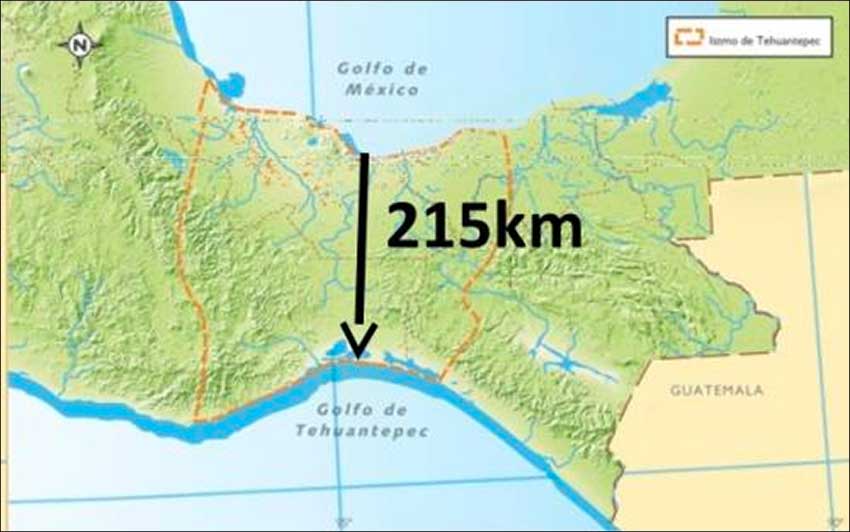Shortly after he won last year’s presidential election, Andrés Manuel López Obrador announced that developing a trade corridor in the Isthmus of Tehuantepec would be one of seven priority infrastructure projects for his government.
The centerpiece of the project is the modernization of a railroad between Salina Cruz, Oaxaca, and Coatzacoalcos, Veracruz, that will significantly cut travel time between the Pacific and Atlantic ports and allow greater volumes of cargo to be shipped from coast to coast.
The rail route has frequently been described as a potential rival to the Panama Canal and will be completed in two years’ time, according to the federal government.
López Obrador has argued that the project will be a trigger for economic and social development in the Isthmus region, which bore the brunt of the first of the devastating earthquakes in September 2017.
The Secretariat of Communications and Transportation (SCT) announced in January that 2.5 billion pesos (US $130.3 million) will be allocated this year to the railway and the modernization of the Salina Cruz and Coatzacoalcos ports.

However, history suggests that completing the project won’t be all smooth sailing.
The Isthmus of Tehuantepec is a “public works cemetery,” according to a report published today in the newspaper Milenio.
During the past 35 years, investment worth more than US $15 billion has been lost as a result of community opposition to projects, the newspaper said.
Much of the opposition has stemmed from environmental and land expropriation concerns.
Among the projects that the region has missed out on are a brewery, a sugar refinery, a rice processing plant and more recently, a massive wind farm project.
Cancellation of the 102-turbine Mareña Renovables wind farm in 2014 resulted in the loss of US $13 billion in investment, while an 800-million-peso (US $41.7-million) wind project slated to be built by the company Electric France in the municipality of Unión Hidalgo is in doubt due to legal challenges.
Local activist Betina Cruz told Milenio that investors and the government consistently promise that large-scale infrastructure projects will bring economic and social benefits to isthmus residents but argued that many people remain without access to basic services.
Community-owned land and the environment end up being collateral damage of the projects, she added.
“We’re not against projects [per se] but we are against them if they are put in place without guaranteeing communities the right to a prior, free and informed consultation, and the right to determine what kind of development they want . . .” Cruz said.
To that end, López Obrador held a public consultation on a range of “priority programs” before he took office on December 1, and found 90.9% support for the Isthmus of Tehuantepec rail project.
Over the past two days, the government also held public meetings in isthmus municipalities in Oaxaca and Veracruz to seek indigenous communities’ views on the trade corridor development.
But the National Indigenous Congress and the Zapatista Army of National Liberation (EZLN), among others, argued that the consultation was a simulation and that the rail project will go ahead regardless of the opinions voiced by local residents.
“These consultative meetings convened by the federal government are a lie, a simulation, a trick,” the CNI said, adding that the railway will expropriate yet more land from isthmus residents and only offer employment with slave-like conditions.
In light of the groups’ concerns, the National Human Rights Commission (CNDH) called on the federal government and its counterparts in Oaxaca and Veracruz to take precautions to ensure that indigenous peoples’ right to self-determination is not adversely affected.
Source: Milenio (sp), EFE (sp)
